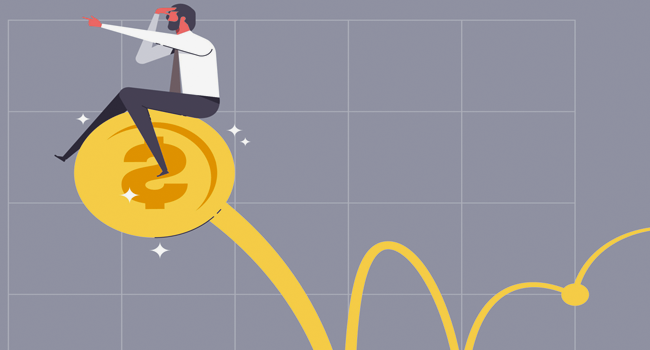The Role of Technical Analysis in Forex Trading
Forex trading, or foreign exchange trading, is a decentralized global market where currencies are bought and sold. It is one of the world’s largest and most liquid financial markets, with trillions of dollars traded daily. Traders engage in forex trading to profit from the fluctuations in currency exchange rates. While various strategies and tools are available to traders, technical analysis is one popular and widely used approach. Technical analysis involves the study of historical price data and using various chart patterns and indicators to predict future price movements. In this article, we will explore the role of technical analysis in forex trading and its significance for traders.
1. Understanding Technical Analysis:
Technical analysis is based on the principle that historical price patterns tend to repeat themselves and that past price behavior can provide insights into future price movements. Traders who use technical analysis analyze charts and graphs to identify patterns, trends, and potential trading opportunities. It uses various tools, including trend lines, support, resistance levels, moving averages, oscillators, and other technical indicators.
2. Identifying Trends:
One of the primary objectives of technical analysis is to identify trends in the forex market. Movements refer to the general direction in which a currency pair moves over a specific period. By studying historical price data, traders can identify whether a currency pair is in an uptrend (rising prices), a downtrend (falling prices), or a sideways trend (range-bound prices). Understanding the prevailing trend helps traders make informed trading decisions, such as entering trades in the direction of the movement and avoiding transactions that go against it.
3. Chart Patterns and Formations:
Technical analysis also involves the identification and interpretation of chart patterns and formations. These patterns, such as head and shoulders, double tops, double bottoms, triangles, and rectangles, provide visual representations of price movements and potential reversal or continuation signals. Traders use these patterns to anticipate future price movements and plan their trades accordingly. For example, a trader might look for a breakout from a triangle pattern as a signal to enter a business.
4. Support and Resistance Levels:
Support and resistance levels are fundamental concepts in technical analysis. Support levels are price levels at which buying interest is expected to be strong enough to prevent further price declines. In contrast, resistance levels are price levels at which selling pressure is expected to be strong enough to prevent further price increases. Traders use these levels to identify their trades’ potential entry and exit points. A breakout above a resistance level or a bounce off a support level can signal a possible trade setup.
5. Technical Indicators:
Technical indicators are mathematical calculations based on historical price and volume data. They are used to generate trading signals and provide additional insights into market conditions. Numerous technical indicators are available, including moving averages, relative strength index (RSI), stochastic oscillator, and MACD (moving average convergence divergence). Traders often combine multiple indicators to confirm their analysis and make trading decisions.
6. Risk Management:
Technical analysis plays a crucial role in risk management for forex traders. By identifying support and resistance levels, traders can determine appropriate stop-loss levels to limit potential losses if the market moves against their positions. Technical analysis helps traders set profit targets and choose when to exit trades. By employing risk management techniques based on technical analysis, traders aim to protect their capital and maximize their potential profits.
7. Limitations and Criticisms:
While technical analysis has benefits, it also has limitations and is criticized. Critics argue that technical analysis is subjective and prone to human biases. They say that historical price data does not accurately reflect future price movements. Additionally, more than technical analysis is needed to understand the underlying fundamental factors that influence currency prices comprehensively. Therefore, some traders combine technical analysis with fundamental analysis, which involves examining economic indicators, geopolitical events, and central bank policies to gain a holistic market view.
Despite these criticisms, technical analysis remains a valuable tool for many forex traders. It provides a systematic approach to analyzing price movements and can be used to identify patterns and trends that may not be apparent through fundamental analysis alone. Technical analysis also offers a structured framework for trading decisions, setting stop-loss and take-profit levels, and managing risk.
Furthermore, technical analysis can be utilized in different trading strategies, catering to individual traders’ preferences and styles. Some traders focus on short-term trading, such as day trading or scalping, where they make multiple trades within a day or minutes. Technical analysis can provide valuable insights into short-term price movements and help them identify entry and exit points based on quick and frequent price fluctuations.
On the other hand, long-term traders, such as swing traders or position traders, aim to capture more significant price movements over an extended period. Technical analysis allows them to identify long-term trends and potential turning points in the market, enabling them to hold positions for days, weeks, or even months. Using indicators and chart patterns, these traders can make informed decisions about when to enter or exit trades to maximize their profits.
Moreover, technical analysis is not limited to individual currency pairs but can also be applied to other aspects of forex trading. For example, traders can use technical analysis to analyze the overall market sentiment by studying indicators like the Advance/Decline line or market breadth indicators. By assessing the participation and strength of various currency pairs, traders can gain insights into the broader market dynamics and adjust their trading strategies accordingly.
It is important to note that technical analysis should not be used in isolation and should be complemented with other forms of analysis. As mentioned earlier, fundamental analysis is another important aspect of forex trading. By understanding the underlying economic factors and news events that drive currency movements, traders can make more informed decisions about the potential impact of such events on their technical analysis-based trading strategies.
Additionally, risk management remains a crucial aspect of forex trading. Technical analysis can assist traders in identifying appropriate levels for setting stop-loss orders, which are designed to limit potential losses, as well as take-profit orders, which are used to secure profits. By using technical analysis to determine these levels, traders can establish disciplined risk management practices and maintain a balanced approach to their trading activities.
1. Backtesting and Strategy Development:
Technical analysis allows traders to backtest their trading strategies using historical price data. By applying their chosen indicators and rules to past market conditions, traders can assess the effectiveness and profitability of their strategies. This process helps refine trading systems and identify patterns or needles that have historically yielded positive results.
2. Market Timing and Entry Points:
Technical analysis can help traders identify optimal trade entry points. By analyzing price patterns and indicators, traders can determine when to enter a trade to maximize potential gains and minimize risks. Technical analysis can provide valuable insights into market timing, allowing traders to decide based on favorable market conditions.
3. Trade Management:
Technical analysis can assist with trade management once a trade is initiated. Traders can use indicators and chart patterns to identify potential areas of support and resistance where prices may stall or reverse. This information helps traders make decisions regarding trade exits, such as taking profits or adjusting stop-loss levels as the trade progresses.
4. Multiple Time Frame Analysis:
Technical analysis can be applied across different time frames, allowing traders to view the market comprehensively. By analyzing shorter-term and longer-term charts simultaneously, traders can identify trends and patterns that may not be apparent in a single time frame. This multi-timeframe analysis enhances the accuracy of technical analysis and provides a more holistic understanding of market dynamics.
5. Psychological Aspect of Trading:
Technical analysis can also impact the psychological aspect of trading. By using technical indicators and patterns, traders can establish a structured approach to decision-making, reducing emotional biases and impulsive trading behaviors. This disciplined approach can help traders maintain consistency and adhere to their trading plans, improving overall trading performance.
6. Market Efficiency:
Technical analysis assumes that market participants act rationally and price movements reflect all available information. Traders who use technical analysis believe these price movements can be analyzed to predict future market behavior. However, it’s essential to recognize that the efficiency of the forex market can vary, and there may be instances where technical analysis may be less effective, particularly during periods of high volatility or significant news events.
7. Continuous Learning and Adaptation:
The field of technical analysis is constantly evolving. To remain competitive, traders must stay updated with new indicators, patterns, and trading techniques. Continuous learning and adaptation are essential to ensure that technical analysis remains relevant and effective in the dynamic forex market.
In summary, technical analysis is vital in forex trading by providing traders with valuable insights into market trends, entry and exit points, and trade management. It enables traders to develop and refine trading strategies, make informed decisions, and manage risks effectively. However, it’s essential to combine technical analysis with other forms of analysis and risk management techniques and to continuously adapt to changing market conditions.
In conclusion, technical analysis plays a significant role in forex trading by providing traders with valuable insights into historical price patterns, trends, and potential trading opportunities. It helps traders identify market trends, interpret chart patterns and formations, and make informed trading decisions. Additionally, technical analysis aids in risk management by setting stop-loss levels and profit targets. While technical analysis has limitations and should not be used in isolation, it remains a widely utilized and effective tool for forex traders seeking to analyze and navigate the dynamic currency markets.


